The Hand tab is your central dashboard showing your personal work queue, ongoing conversations that require your attention and your bookmarks.
Card Hand
In Codecks Hands are personal todo lists. They can contain any of your owned Cards, independent of project, milestone or priority. You can freely drag and drop Cards to sort them in any order that you want. Like in a Card game you can think of them as your short list of Cards that are relevant right now and will be played next.
As a users’s Hand can only contain Cards owned by that user, a Card can only be in one Hand at a time. Starting progress on any of your Cards will automatically move it to the front of your Hand. Removing the owner from a Card, will also remove it from their Hand.
In front of your Hand, you’ll find the done pile which contains all your recently done Cards. As you set Cards to done, they’ll be automatically moved out of your Hand into the done pile. The top of the done pile will feature the most recently done Card, but clicking on it allows you to inspect all the Cards of the pile. You may clear your done pile as you like (we recommend daily or weekly).
Your Hand has a limit of how many Cards it can contain. The minimum number is seven Cards, which represent your top Cards. Cards that have been added to any Hand are designated with a small Hand icon. If a Card is in one of their owner’s seven top slots, the icon will also feature a small number specifying the exact spot. Beyond those seven top Cards, your Hand may also contain up to 21 additional Cards (the exact setting can be customized in your organization settings). The default setting is set to 14 (7 top Cards and 7 additional slots).
Hand Management
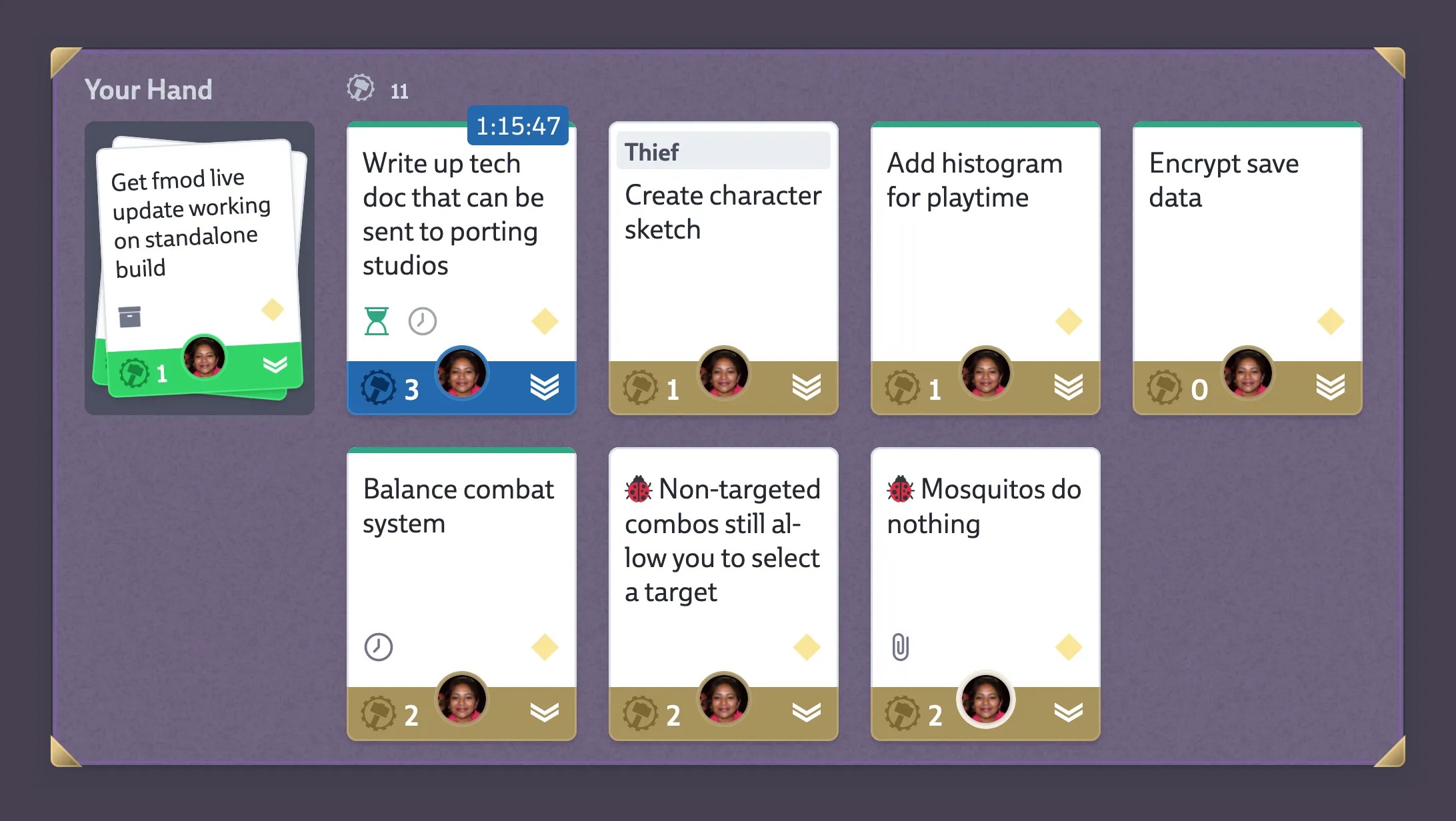
On any opened Card you can click the Hand icon at the top to open the Quick Hand view. This allows you to quickly inspect the Hand of the current owner of the Card and drop the Card into any of the slots. You may even re-arrange the order of other Cards in the Hand. You can discard Cards from the Hand by clicking the disCard action that appears when hovering over a Card or by dragging the Card into the lower “Cards not in Hand” section.
When exiting the quick view by clicking outside the panel or pressing ESC you will be put back right at your previous location so that you never lose context.
Selecting multiple Cards and clicking the Hand bulk action will open the quick Hand view with all the selected Cards being added to the view. This allows you slot in multiple Cards at once. You can even select Cards that are owned by multiple people and the quick Hand view will feature a user tab for quickly switching between the different relevant Hands. If you hold down the CTRL/CMD key before clicking the Hand bulk action the quick view will be skipped and all Cards will instead be directly appended to their owner’s Hand. If all the selected Cards are already in a Hand, the action will instead discard them from all their Hands without opening the quick view.
When creating a new Card you can choose to add it to the owner’s Hand right away by toggling the Hand icon on top the Card-creation dialogue. The Card will be appended to the owner’s Hand. This action won’t be available if they don’t have any open Hand slots available anymore.
Your Conversations
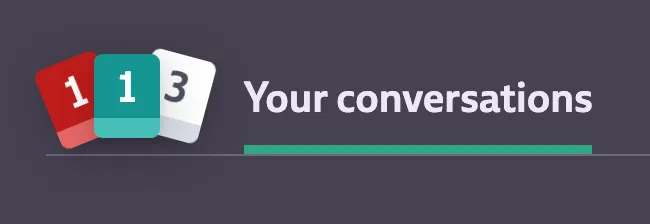
This section gives you quick access to all the ongoing conversations (reviews, blocks and comments) that you’re involved in. Your ongoing conversations will appear in this section until the conversation has been closed or you opted out of the conversation.
By toggling the “Show all” button on the right side you can see all the ongoing conversations in the project, including those that you’re not currently part of.## Your Runs

This section will show all Cards owned by you in all your current Runs. It will show all Runs that you have access to. This depends on whether there’s an overlap with the projects you have access to and the projects that are used in the Run Configuration.
The Runs are ordered as follows:
- If you own no cards, in a Run, the Run will be shown in the bottom group
- Both groups are ordered by the end date of a Run, the closer the end, the higher up it will be
For each Run, Cards will be grouped by Zone as defined by the Run’s manual order.
You can use drag and drop to move Cards within the section or to your Hand above.
Clicking on the Run’s name will open the full Run view in the Timeline.
Pinned Milestone

You can pin any Milestone by opening it and looking for the pin icon 📌. Once pinned, this Milestone will show up in your Hand under the Pinned Milestone section. This section will show all your owned Cards of this Milestone. The Cards will be grouped according to the Milestone’s zones. You can use drag and drop to move Cards within the section or to your Hand above.
Use the See full Milestone button at the top right to manage both Zones and see all the Cards of the Milestone.
Team Hands
Beyond the quick Hand view you can also inspect the Hands of other team members directly from the Hand tab in the Team Hands section. Click manage to set which team member’s Hand you want to see and the order in which they should appear. This gives you a quick overview of what other team members are working on right now and planning to do next. You may even change the Card order of Cards inside of your team member’s Hand by simply drag and dropping Cards. Make sure to establish with your team how and when this is appropriate to do.
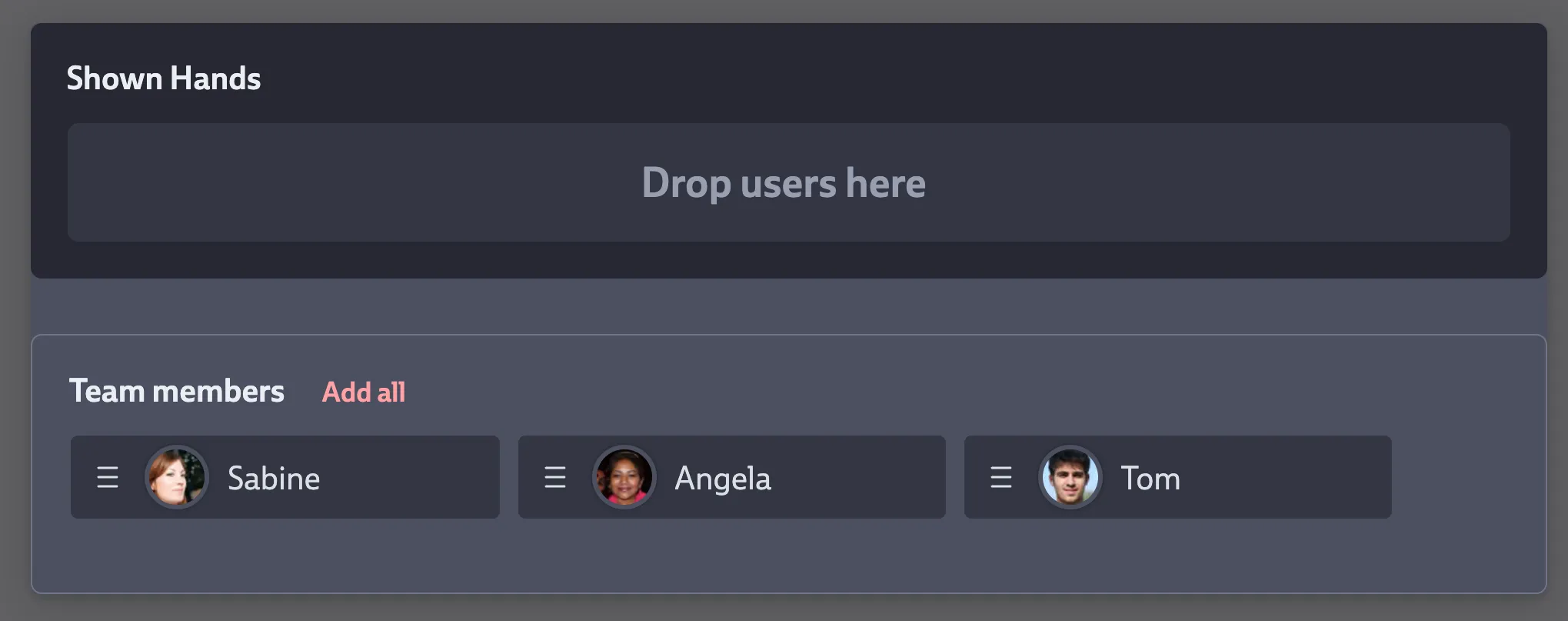
If a Card inside a Hand is not accessible to you (e.g. it is a ghost Card - see below - or is inside a project to which you have no access), it will be shown as inaccessible Card featuring the icon of our rogue figure. Accordingly your own private Cards are never shared with your team members and shown as inaccessible to your team members, even if you add it your own Hand. They will see that the Hand slot is occupied by a Card but not be able to get further information. This still relays information the information to them that you’re busy with something, but not what exactly.
In addtion, both your Hand as well as each Team Hand offer to pick a Default Inbox Deck via the button at the top right.
Bookmarks
Bookmarks allow you to keep a shortlist of any set of Cards, even those that are not owned by you. You may use these to quickly access document Cards that you need to look up often. You can bookmark an unlimited amount of Cards and rearrange them freely by drag’n’dropping Cards into place.
A Card can be added to the bookmark list by clicking the bookmark button on the bottom right side of each opened Card. You can also bookmark new Cards right away by toggling the bookmark icon when creating a new Card.
Ghost Cards (see below) will always be bookmarked automatically so you won’t lose them. Archiving a Card will also remove them from the bookmark tab. To retrieve archived bookmarks you can hit the “Open bookmarks in search view” at the right of the panel and include archived Cards in the search panel.
Activity
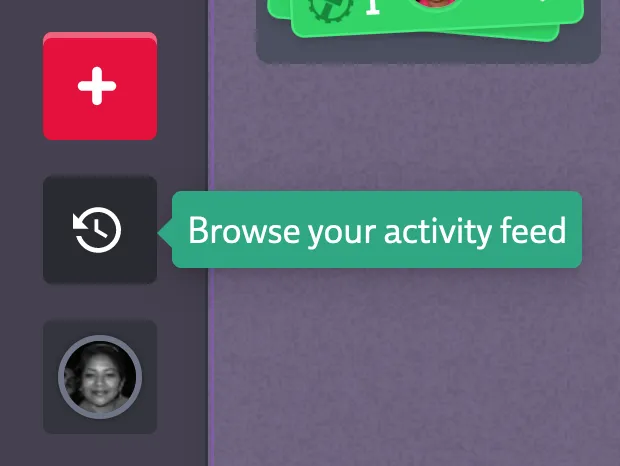
The activity button in the left action bar allows you to inspect all your recent activity. Use the button on top of the activity list to enable/disable activity types. By default all activity types are shown. Enabling a filter will only show activities of that type. You can switch to the activity list of other team members by using the user selection box in the top right of the screen.
You can also access the activity list of an individual team member by clicking the activity icon that appears on hover in the top right corner of each Hand inside the Team Hands section.
Your Cards
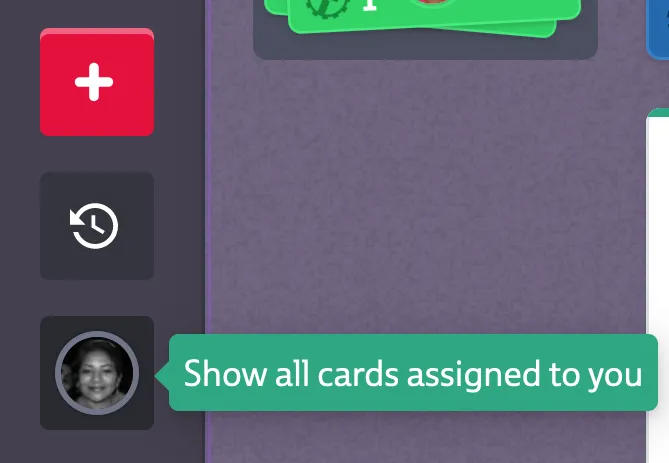
Beyond the Cards inside your Hand, you may see all Cards assigned to you throughout all visible projects and decks by clicking the button featuring your portrait on the left hand side of the Hand tab. As anywhere you can also use the shortcut q to access this view quickly.
Ghost Cards

If you don’t specify a deck during the Card creation process, the Card becomes a private ghost Card. That means that the content of the Card is hidden from all other team members. You can’t share it via comments or by passing the URL around. You can use these Cards to keep personal notes (e.g. if you want to edit your radical design proposal before shocking the rest of the team).
To convert a ghost Card into a regular Card, just put it into a deck. This makes the Card findable by your teammates and lets them appreciate your creation. Note that this isn’t reversible: i.e once a Card is in a deck you can’t turn it into a private Card anymore.
You can recognize ghost Cards by the cute ghost icon at the bottom of the Card. If you’re wondering why a Card is not showing up for somebody else, making sure that you didn’t create a ghost Card is a good thing to check first.